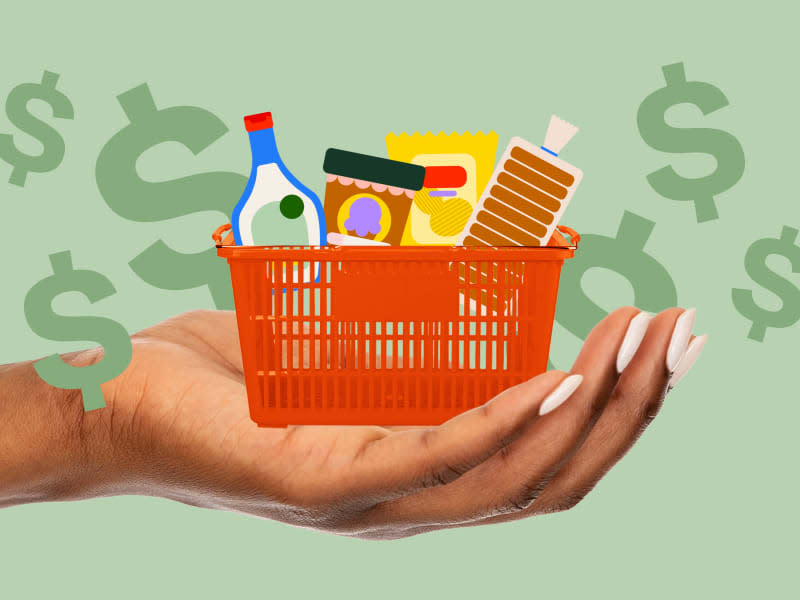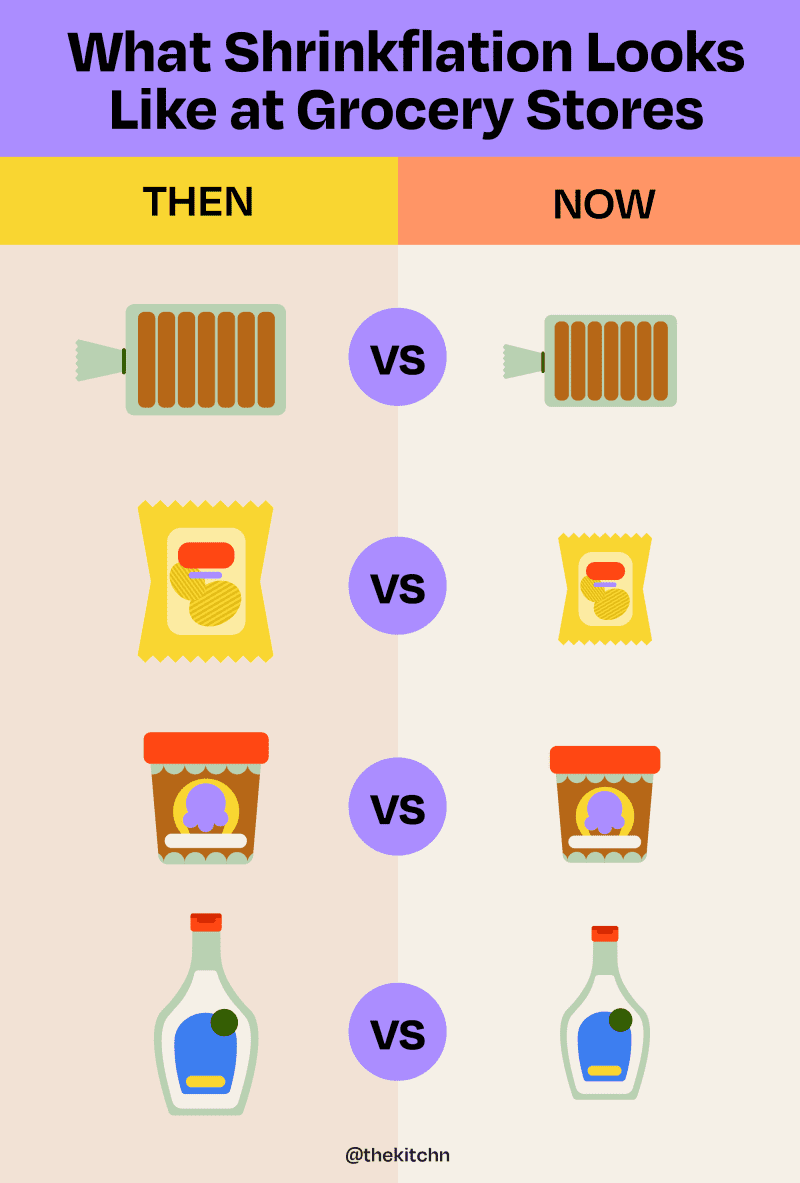8 Rules for Navigating “Shrinkflation” at the Grocery Store

April Fools Day has passed, but I still feel like I’m being pranked at the grocery store. Every other item I’ve grown accustomed to buying seems to be getting smaller, yet the price remains the same (or is increasing). It’s enough to make me feel like I’ve taken an Alice in Wonderland-style growth potion, when the potato chips/yogurt/hot sauce/toilet paper I got just the other month is ounces smaller, yet a dollar more.
Even Cookie Monster is Big Mad about it, and when something travels all the way to Sesame Street, you know it’s gone far enough. As of now, Cookie Monster is resolving to eat “double da cookies,” but what about the rest of us? I read through dozens of studies and even polled The Kitchn readers to learn how to navigate shrinkflation, and thankfully there are plenty of tips we can start employing today (and even a few that Future Us will be happy about).

But First, What Is Shrinkflation?
As the portmanteau suggests, shrinkflation is the business practice of reducing the quantity of the product for sale, yet keeping the price the same or increasing it.
Contrary to its name, shrinkflation is not limited to just times of inflation. While it might seem like a recent problem, it’s hardly breaking news. Shrinkflation has been a practice since at least 1988, when Chock Full O’ Nuts coffee tins became slightly less-than-chock-full, and as far back as the late 18th century.
We’ve long been concerned about the size of our bread, and we still are for good reason: Once prices go up and loaves shrink, they rarely ever go back to their former size or price. But all hope is not lost! There are several ways you can dodge shrinkflation at the grocery store and still have your cookies (and eat them too).
8 Rules for Navigating Shrinkflation
1. Give store brands a second look.
I can’t be the only one to notice that store brands are plentiful and actually pretty great (see: Target, Costco, Aldi, Trader Joe’s). Long gone are the days where name brand = best quality. In fact, many of these products are actually manufactured by the very same brands you already love (this is often the case at Trader Joe’s and Aldi). Plus, the savings you gain from switching can often be pretty substantial.
Mac, a reader based in Chardon, Ohio, noticed that these brands often have the same sizing (if not larger) for less than name-brand items, which is especially true of canned items. Aside from canned goods, some store-brand groceries we’ll definitely be buying on repeat include Greek yogurt, olive oil, BBQ sauce, and pasta sauce.
2. Comparison shop between retailers.
You might not be surprised to learn that the very same gallon of milk is nearly $1 less at one grocery store. While this is not exactly news, it’s definitely something I’m more aware of as prices and quantities continue to fluctuate. It’s even a big reason why some readers have stopped shopping at their favorite retailers. If you, like me, don’t have much time to shop in-store and compare across stores, comparing prices online before you shop will save you time, energy, and money.
3. While you’re at it, check for “skimpflation.”
Do some of your staples seem watered-down, less effective, or to have changed in flavor? That’s what many are calling “skimpflation.” Not to be confused with shrinkflation, “skimpflation” is when companies skimp out on the quality of their products, yet charge the same. I’ve noticed water higher on the ingredients list of a bottle of shampoo, thinner toilet paper, and yogurt overly thickened with gums. It quite literally pays to compare ingredient labels to make sure a product is more than just a pretty package. Furthermore, if you are dissatisfied with the quality of an item, you absolutely can (and should) return it to the store.
4. Buy in bulk strategically.
See a sale? It’s time to buy in bulk, especially for packaged items that are often the most prone to shrinkflation, like snacks, toilet paper, cereal, and cleaning supplies. (Sales are often cyclical too, so you can track when the discounts are headed your way.)
5. Use up EVERY last ounce.
Few things infuriate me more than tossing/wasting food — let alone items I’ve bought and paid for with my hard-earned dollars. A well-organized fridge and meal plans that rely on frozen leftovers (or otherwise) are some of the best cost-saving practices around. And don’t sleep on those last drops, either. You can make breakfast and sauces with nearly empty peanut butter and jam jars, vinaigrettes with mustard jars, and even put orange peels to work as a DIY all-purpose cleaner.
6. Visit your local food bank.
When times are especially tight, food banks are always there and often serve community dinners and distribute food and essentials, regardless of income status or need. Where I live, in Los Angeles, there’s a shoppable food bank (World Harvest Food Bank) that will allow you to pay $75, and receive over $300 in donated food.
7. Consider making (or growing) items at home — and with neighbors.
Being more self-sufficient — starting a garden, making your own bread, foraging, raising chickens — might not be the most accessible way for everyone to save, but it does make you less connected to the companies that are doing the shrinkflating. If anything, you might have a friend (or friend of a friend) who has more eggs/zucchini/sourdough starter than they know what to do with.
8. Vote!
With the increased awareness of shrinkflation practices, many members of congress are bringing the impetus to the ballot. The Shrinkflation Prevention Act of 2024 was recently introduced in Congress, so it’s well worth looking into candidates doing actionable work against inflation (and shrinkflation) as we head towards Election Day.
Got a tip to add to the list? Tell us about it in the comments below.

